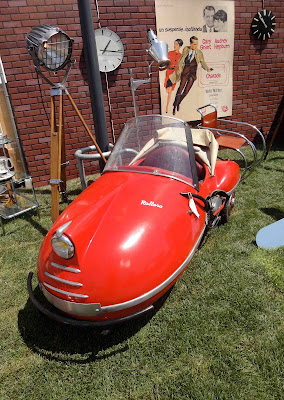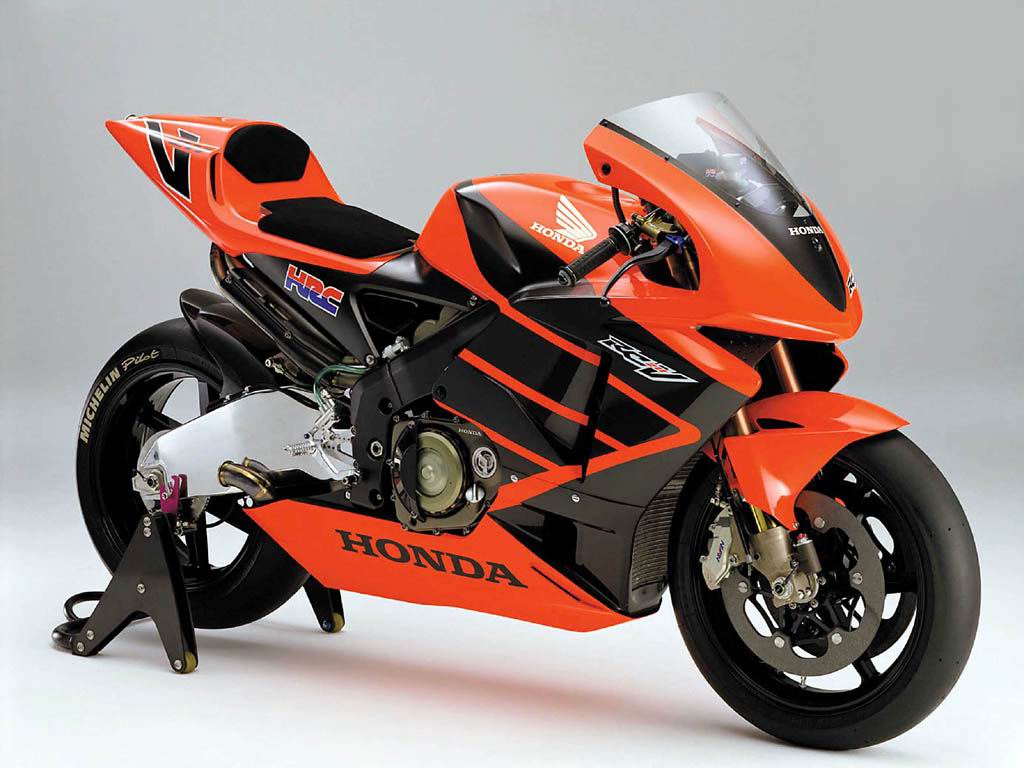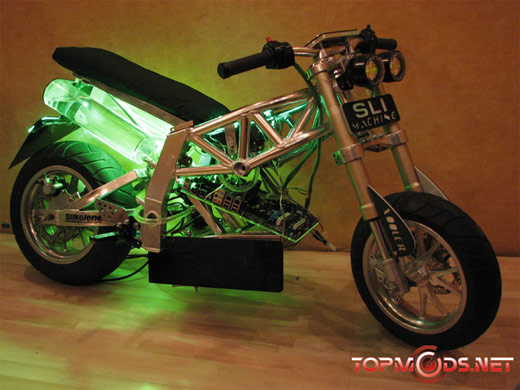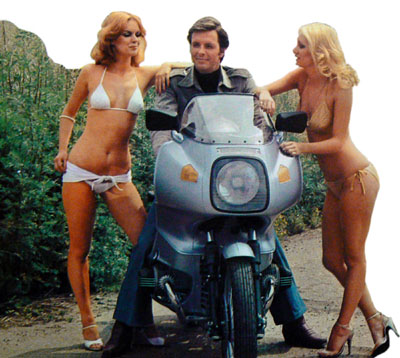|
|---|
Saturday, July 31, 2010
MOTOCYCLES COMIOT: THE IMPRESSIONIST'S CHOICE
Nearly the entire contents of the Musée d'Orsay has been shipped to San Francisco's deYoung Museum for safekeeping, while jackhammers do their work to upgrade the old Parisian train-station-cum-Impressionist-museum. Not to be outdone, our sturdy replica of the Legion d'Honneur, just up the road, has the 'City of Light' show, all about late 19th Century Paris, using the remarkable contents of the Achenbach Foundation's collection of art on paper, which includes much 'commercial' work by post-Impressionist notables like Toulouse Lautrec, Alphonse Mucha, etc.
The largest print on show (at some two metres tall) is an advertisement for 'Motocycles Comiot' from 1899, drawn by Théophile Alexandre Steinlen (most famous for his 'Chat Noir'), who clearly considered the noisy three-wheeler not especially artworthy, and has nearly obscured the tricycle behind spooked geese and milady's voluminous skirting. Still, Steinlen saw the machine, and has given at least an indication of its merits; all black paint, with various hand controls bolted to the top frame rail, and long steel levers for the brakes, á la bicycles of the period...the front pads dangling over the tire for a beastly method of retardation, shortly never to be seen again.
What would be seen again in short order is milady herself, piloting a motorized bicycle or tricycle along the muddy unpaved tracks of the countryside, undaunted. This poster could well be our first image of a woman on such a vehicle, and it wasn't a flight of artistic fancy - women were right there among the first riders of bicycles and motorcycles, bucking 'feminine' conventions of the day and enjoying that familiar addictive sensation of powered motion under her control. Steinlen hasn't sexualized his rider or cast her as goddess-slave, she is simply a woman of the period, smartly dressed, riding the Future.
What a remarkable historical juncture; into the world of the Moulin Rouge, Monet's gardens at Giverny, and Degas' pastel ballerinas, chuff the ancestors of all Motorcycling, nosing their way into the artwork of the period, with a woman at the helm. Cheeky.
(Mr. Comiot participated in the 1897 Paris-Dieppe Trial on a De Dion-Bouton tricycle, winning 17th place; perhaps he felt he could have won on a machine of his own devising, and by 1898 we find Comiot tricycles using De Dion engines, a few of which survive today. I found the photos above from the Royal Veteran Car Club of Belgium.
FYI, an example of this poster sold at Sotheby's last June for 24,000euros. )
Labels:
Bikes in Advertising
Monday, July 26, 2010
MYSTERY RACER
A curious racing motorcycle appeared in my mailbox today, of an engine configuration I've never seen. I have an idea that the chassis is a Smith frame from Australia, which was a scaled-down Norton Featherbed built to house mainly Velocette engines for 250cc racing, and which was based on the Beasley frame from England. That this machine uses Velocette forks, gearbox, and wheels supports the theory. Typically, Velo MOV pushrod engines were used in such frames, often with special cylinder heads in bronze or aluminum cast by enterprising tuners such as Carey. Some frames housed sleeved-down KTT engines, which were certainly heavy but fast and durable.
Australian racers did battle far away from the epicenter of the motorcycle industry; spares took months to arrive, and tuning advice dispensed in a mere trickle from the factories. So, the 'bush tuners' made their own racing heads, frames, or whole engines. It appears this curious motor is entirely home-made, and appears to be an 'OP' (opposed piston) engine, in which two oppposed crankshafts move two pistons towards each other in a common cylinder barrel, forming between them the combustion chamber at the top of their stroke. Fairly common in marine applications and sometimes aircraft, such an engine is very rare on a motorcycle!
There are as many variants on the internal combustion engine through its nearly two-century existence, as there are dinosaurs with outlandish teeth, armor, and body shape. And, most are equally extinct, for the moment.
Can any readers shed light on this machine's history?
Australian racers did battle far away from the epicenter of the motorcycle industry; spares took months to arrive, and tuning advice dispensed in a mere trickle from the factories. So, the 'bush tuners' made their own racing heads, frames, or whole engines. It appears this curious motor is entirely home-made, and appears to be an 'OP' (opposed piston) engine, in which two oppposed crankshafts move two pistons towards each other in a common cylinder barrel, forming between them the combustion chamber at the top of their stroke. Fairly common in marine applications and sometimes aircraft, such an engine is very rare on a motorcycle!
There are as many variants on the internal combustion engine through its nearly two-century existence, as there are dinosaurs with outlandish teeth, armor, and body shape. And, most are equally extinct, for the moment.
Can any readers shed light on this machine's history?
Labels:
Historic Photos
Saturday, July 24, 2010
OTHER PEOPLE'S GARAGES #6
There are garages where motorcycles rest, waiting for a spot of attention from a devoted owner, or even better, a ride in the sun. There are garages where motorcycles rot, sitting endlessly, slowly evaporating from inattention. There are garages full of projects, waiting for the time which usually never comes, while small parts scatter like mice under the feet of distracted owners.
Some garages are palaces, some are shrines, some are nightmares. And on rare occasions, you are led to a garage which is a haven, an evocation, rich with the possibility of adventure, where every motorcycle has a fine sheen of oil, and looks as if it has just been ridden. And Every. Single. Motorcycle. Runs.
I was treated to just such garage today, a remarkable thing, whose keeper has for decades held a watchful eye for unrestored and original motorcycles. Yes, there are a few shiny bikes here, but not many, and the gloss of new chrome in such company seems merely thin, the piping voice of a student in a room of pipe-smoking sages.
The magic of old paint and oxide and oiled steel is the promise of a Story - every dent, every flaw, every rough and rust-pitted wheel, all speak to decades of experience, places traveled, adventures of youth and speed, small tragedies, joyous bursting spring days on empty roads and a rising throttle, earnest hands oily and tending to the needs of the beast.
And the special effect of an unrestored machine is telescoping past all those years of use, neglect, sleep, and resurrection, to see straight back to the maker's finish as it left the factory; not an accurate copy but the real deal, no arguments...just take your education here sonny boy, this is how it was.
And for such a man's efforts, his good sense to preserve a library in metal and oil and rubber, a place where the feel of the past can be learned as by braille, we are thankful.
Labels:
other people's garages
Wednesday, July 21, 2010
COCTEAU, ORPHEUS, AND MOTORCYCLES
On a recent visit to the south of France, I discovered a museum devoted to Jean Cocteau, one of my favorite filmmakers, whose symobolic use of motorcycles left a deep impression on me as a young man. The musuem, in a 17th Century fort, is charming and full of pebble mosaics Cocteau himself designed. A new museum is being built nearby for a far more extensive collection of his work.
In 1949 Jean Cocteau (above) began filming an adaptation of the Orpheus myth, set in contemporary times, with his own spin on the story which bore relevance to his own life at that moment. Famous as a poet and playwright/producer before WW2 in France, and afterwards for his stunning adaptation of 'Beauty and the Beast' ('La Belle et la Bete', 1947 - still the finest film version of the story), Cocteau sought to solidify the success of 'Beauty' with an experimental version of the ancient tale.
In the Greek original, Orpheus is a great poet whose singing can charm the birds, trees, people, rocks. He marries the beautiful Eurydice, but she is bitten by a poisonous snake on their wedding day and dies. Orpheus follows her to the realm of Hades, enchanting Charon, ferryman of the dead, to carry him across the river Styx to the land of shades. Orpheus even enchants Hades, lord of the underworld, who allows Eurydice to return to the land of light, on the condition Orpheus not look at her until she reaches the surface. He forgets himself when he sees light, and Eurydice fades away as a shadow. Orpheus tries again to enter the Underworld, is refused, and wanders the woods, playing music, until the Bacchantes (Maenads, frenzied women) tear him limb from limb. His head floats down the river, singing, and his body parts wash up, ironically, at Lesbos.
In Cocteau's version, Orpheus is a poet whose fame is great, but who lacks respect from the new, young, existentialist/beatnik poets who drink at the Café des Poétes. While visiting the café, Orpheus is disrespected by the very drunk but hot new poet Cegeste, who is shortly killed by a pair of motorcyclists roaring through town. A rich woman in a Rolls Royce (the Princess), who escorted Cegeste to the cafe, orders Orpheus to help carry the body of the young poet in her car. It is revealed to Orpheus that she is Death, or one of many such embodiments, and the intimidating and lethal motorcyclists are her henchmen. Orpheus and Death fall in love, and Death sends Cegeste's poetry through the radio in her Rolls to Orpheus, who becomes obsessed with the poetry and Death, and ignores his beautiful wife Eurydice.
Death, jealous, has her henchmen kill Eurydice, and Orpheus follows her to the Underworld through a mirror (simple and effective special effects are used involving dual film stocks, reversed footage, and a 2-ton tub of mercury!). For interfering with Life, the Princess must stand before a tribunal in a ruined building (much of the Underworld is a bombed-out French military school), for it seems that while nobody really gives the orders for who is to live and die, such orders echo through Hades like the sound of drums. Orpheus wins Eurydice back to Life, but catches a glimpse of her in the rear-view mirror of the Rolls. The Bacchantes, habitués of a lesbian beatnik bar, are furious that their former bar-girl Eurydice is dead, and kill Orpheus.
The effects used in the film are simple and evocative, and his use of motorcyclists as the Henchmen of Death is very effective; the sound of their engines approaching is the cue that someone is about to die; the bikes roar into the scene for a shadowy instant, then blast away down the road, leaving a body sprawled on the pavé.
As it turns out, Death rides an Indian! Two in fact; the machines used in the film look like a '37 Chief and a '40 Sport Scout with early skirted fenders. I was surprised while researching this article that the two machines used are mismatched, but there you have it; Orphée was made on a very limited budget. He probably borrowed the studio head's Rolls...
The Henchmen's outfits are actually very standard motorcycle gear for '49 - leather helmets with shaded goggles (a darkened half-lens can be flipped up or down; I have a pair), dark wool shirts and trousers, gauntlet gloves, and wide leather kidney belts. The costumes for the film are slightly exaggerated (gauntlets and belt are a bit wider than normal), but emphasize a kind of menace which a motorcycle policeman of the era would recognize, and utilize as an effective tool of intimidation.
All motorcyclists intuitively feel the visual power of a helmeted rider - and some clearly think that's the best part of motorcycling. If we're honest with ourselves, I think we would all acknowledge the thrill of that dark power. There's an alchemical transformation of a rider on a motorcycle; the erotic bond of human/machine is what makes them so irresistible, and so powerful to watch.
Cocteau recognized this, being a student of mythos. There's even a scene, he couldn't resist, in which an armed Rider momentarily stands next to a statue of Venus, the dark rider ready to kill next to the white nude marble of Love - Eros meets Thanatos indeed!
Labels:
Motorcycles In Film
Monday, July 12, 2010
UNIQUE BLOWN BMW FOR SALE
In 1958, Walter Zeller ordered a very special BMW from the factory, to be built entirely to his specification and to suit his riding style. As Zeller had been the principal Works racing rider for many years, gaining several German championships and 2nd in the World Championship in 1956, BMW management granted him this solitary exception to their rule of 'no custom orders'. That the factory presented the finished product as a gift for his services to BMW is the stuff of legend; the ultimate BMW trophy.
The machine is a mélange of interesting parts; a 600cc ohc Kompressor motor from Max Klankermeier's '49 sidecar racer (blowers were still allowed in German national championship races after '48), housed in a special Rennsport-based swingarm frame, utilizing telescopic forks from the 1951 Works development racer, instead of the Earles type on the racers and contemporary BMW roadsters. The forks are a very interesting choice; did Zeller feel that his racing BMWs handled poorly with their Earles forks? If Zeller 'voted with his feet', the answer is yes, he preferred a standard telescopic fork to the Earles item. Quite a statement for a Works rider to make, actually! To quote Josef Achatz (the foreman of the build team for this bike), "Walter preferred telescopics".
Lighting was added to the front and rear, again interesting choices, for while the headlamp is as per the roadsters, but with a tachometer replacing the speedo, the taillamp is a seriously prewar item, as used on mid-30s machines; the Bosch equivalent of the ubiquitous MT110 Lucas taillamp, used on just about every British bike in the 30s and through WW2.
The tank is as per the Works machines, as is the seat, while the exhaust is the fishtail type as used on the R51 and other models pre- and post-war. It would have squelched the power of the blown engine, if any baffles were fitted, which is an open question; why have a supercharged engine with a power-strangling muffler? But, the original TUV specification papers state the sound output as 73db; terribly quiet for a racing bike. Top speed is quoted at 112mph (180kph), which is certainly down on any of the supercharged racers, which were at least 30mph faster through the speed traps. Weight is quoted in the TUV document at 388lbs (176kg), but Zeller had the machine weighed at a steel factory (St. Anna-Huette; Zeller's family business), which quoted 317lbs. This is very close to the '39 TT-winning bike of Georg Meier, which was 30lbs lighter than the competition.
Zeller kept the machine for many years, and used it occasionally on the road. As there is no kickstarter, he bump-started the bike; in this, his racing years gave him expertise. According to news reports, it took him 'ten or a dozen starts' to sort out the right combination of throttle, magneto, and air levers - after this, his technique was flawless. Once the bike was warm, the plugs would be changed to a harder grade... it's clear this one-off BMW required a bit more forethought to ride than the typical 'no fuss' flat twin. As there was no room for a generator, the lights are total-loss, making this strictly a daytime ride.
Contrary again to the TUV papers, Zeller reported the bike would acclerate from 0 to 100kph in under 5 seconds, and that 200kph (124mph) was 'no problem'. In 1958, there was only one other road-going machine capable of such speeds, and the Vincent Black Shadow had double the engine capacity, was 140lbs heavier, and had been out of production for 3 years! Zeller must have cut quite a romantic figure on the Alpine roads he favored (Queralpenstrasse and others), passing literally everything on wheels, drawing a large crowd whenever he stopped, then bump-starting away, leaving only a fantastic noise, and a slight haze from the 2% oil mix lubricating the supercharger.
Alas, times were difficult for Zeller's family business in 1963. He had been pressed by a persistent pesterer, a schoolteacher no less, to sell the machine. Norbert Reisbeck phoned Zeller every month for over a year, asking again and again if he could buy the magical BMW. In what must have been a black month, Zeller caved in, and sold the machine for 7,000DM in 1963.
After the death of Reisbeck, a new owner began to advertise the machine for 3million euros a couple of years ago. As a reality check, the ex-Georg Meier '39 TT winning BMW Rennsport sold for around £250,000 six years ago, according to rumor, so a machine with no racing history but an intriguing story should surely sell for far less. The price dropped to only 1M euros this year (via an ad in Motor Klassik last April), and the bike is currently still available Any takers?
(The source of photos 2-6 are from an article on this machine by Ernst Leverkus in The Classic Motorcycle, April 1986)
Labels:
BMW
Sunday, July 11, 2010
LEMANS CLASSIC, 2010
Few races are as storied as the 24 Hours of LeMans. Auto constructors have battled it out on this track in central France since 1923, in the oldest endurance race in the world. Conceived initially not so much as a test of speed, but of reliability, efficiency, handling, economy, and safety, the innovations developed for a win at LeMans have eventually made their way into standard production cars.
The rules have changed over the decades; the famous 'LeMans Start', where lined-up drivers ran across the track to their cars at the drop of the flag, was dropped in the 1970s as too many injuries accrued from hasty unharnessed pilots on lap 1. Limits on the amount of fuel have been adopted and dropped, as have the requirement for a passenger seat, a mechanic, etc.
The full circuit is 13km, with two long straights; the famous 'Mulsanne Straight' is one of the longest of any race circuit at 5km, with speeds of 250mph recorded during the race before a chicane was added to slow things down. The aerodynamic experiments on LeMans cars began in the 1920s, with the Bugatti 'Tanks', and in general the cars look completely different to F1 or GP racers. Parts of circuit are on public roads, meaning the surface isn't pristine, so LeMans cars need to cope with changes in pavement.
The race was made most famous perhaps by Steve McQueen, whose 'LeMans' was actually filmed during the race, with cameras on-board cars purchased from Porsche (917), Ferrari (512), and Lola (T70). Due to the need to change film reels, the cars did finish the race, but not within an acceptable distance.
Since 2002, LeMans Classic has become a bi-annual sporting event to rival Goodwood in England, with many thousands of classic cars filling special parking areas around the track, and a 'dress code' in place to encourage period dress. In 2008, the Porsche club alone brought over 1000 cars around the track in a demonstration parade.
This year, over 100,000 visitors were expected, and I managed to snag some passes for Friday's practice sessions, before the place was completely overrun with customers. As a dedicated gearhead, the prospect of looking under the hood of a supercharged Bugatti was impossible to resist.
It was oppressively hot in central France, but I didn't see any helmeted drivers in their Nomex suits passed out on the grass while waiting for their track time. The endless grass parking areas for classic car clubs were only part full, but it was clear how many were expected as every club had a space roped off.
While motorcycles have been raced on LeMans tracks in the distant past, they have never participated in the 24 Hour race, and are in short supply at the Classic, although of course, plenty of 'car people' love/own bikes, and I spotted a few. A welcome change from the endless array of vintage Bentleys and Bugattis, Delahayes and Facel Vegas (a favorite of mine - sexy French body, big Yank v8), and row upon row of aerodynamic cars post-1960, Matchbox models of which are still packed in boxes from my boyhood!
Artcurial holds an auction of vintage cars on Friday afternoon, and while the tent was underventilated, the place was packed. One motorcycle was included in the lineup, and the staff is hoping to have more next year - LeMans Classic was their first car auction, their next is Retromobile, for which they are lining up motorcycles already.
As at Goodwood, those caught out in modern duds can find something appropriate at one of the many vintage clothing vendors, or have a bespoke suit made, or have their hair done up in period style at one of the many coiffueriers on site. Plenty of beer and champagne tents dot 'the Village', and of course, this being France, the food vendors are first-rate. I ate well, if expensively. Would I return? Yes, but bring plenty of ice and shade. I understand the sunrise with vintage cars blasting down the Mulsanne is really quite a sight.
Labels:
Vintage Racing
Subscribe to:
Posts (Atom)









































































